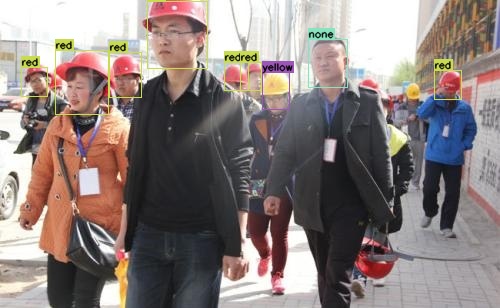Overview
Construction sites using Artificial Intelligence are a high risk category work place as it can be potentially harmful for the workers working there, if proper care is not taken. Head injuries or others can be life threatening and fatal. Major Accidents in construction sites happen due to workers not wearing proper helmets. So it brings out the inevitable, workers should be checked regularly if they are wearing their helmets. Manually supervising the same can be tedious and inefficient. Hence, introducing automatic detection of the same can be highly efficient and imperative.
Challenges
The automatic helmet detection system using Artificial Intelligence could work poorly if the images or videos uploaded are blurred or small. The preprocessing is needed to improve the quality of images and has to be done manually. This might lead to missing some objects of the image that can be useful. The state-of-the-art algorithms are still not efficient to detect people wearing helmets where the faces are recognizable, this could lead to performance lag of the software. There are no sufficient data sets and other computing resources available to detect helmets in construction sites.
Our Approach
After a thorough research we were able to implement Deep Learning technology to detect helmets more accurately. CNN or Convolutional Neural Network, a DL methodology, was employed to detect helmets accurately by using Artificial Intelligence. There are several different layers in CNN that helped us to remove the unnecessary parts of an image and compress it. CNN was also employed to transfer processed images to other layers even faster and we employed R-CNN which has the functionalities of CNN to classify and categories the images more accurately. The downside of R-CNN was that albeit the efficiency was higher it was quite slow. Single Shot Multi box Detector or SSD was coupled with R-CNN to provide faster and accurate results. SSD on its own is not very accurate. But owing to the limitations in CNN, we found SSD algorithm much more beneficial in our case. We used SSD model to filter the input images to a certain extent and then used Mobile Net model to proceed further. The filtration done by Mobile Net is more reliable as it uses two layers of filtration to categories images. We used Python for web crawling to gather every information and images available on the web to last bits. But not all images were worth using, so we implemented manual searching of images. We used the open-source software Tensor Flow for machine learning to train our software.
Result
Tensor Flow and SSD Mobile Net were coupled to train the software to categories the images fed. The mean average precision of the software increased manifold and the detection was much more faster and accurate Errors were brought to minimal and probability of accurate detection increased using Spyder Software


